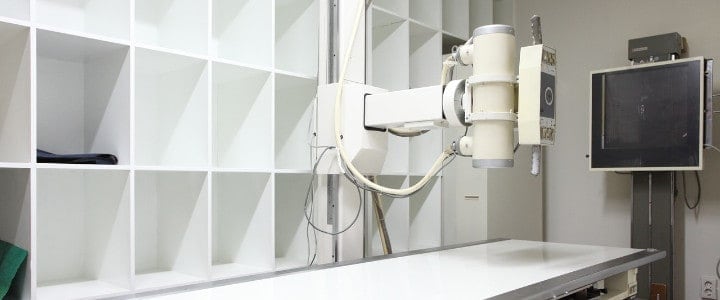Is Being a Radiologist Dangerous?

Radiology and radiologic technology are tempting careers for many looking for interesting, long-term work that pays well. However, many are scared away by studies showing an increased risk for cancers in those who work with X-ray technology.
Unfortunately, eliminating the risk associated with radiation exposure entirely isn’t possible. However, current safety measures make the field safer than it may seem to be. Understanding the actual risks associated with a career as a radiologist or radiologic technologist makes making a good personal decision easier.
In This Article
History of X-ray Technology
When X-ray technology started to see widespread use in the 1920s, there was no regulation in place for those who used X-ray equipment. And from the 20s through the 50s, radiology workers were exposed to enough radiation to lead to significant increases in skin cancer, breast cancer, and cervical cancer. As technology advanced, regulations were slowly put in place to limit radiation exposure for both radiologic technicians and patients.
Most studies about the dangers of radiation cite increased risk for certain cancers. These studies were generally conducted over many decades. Some had little to no regulation or concept of the cancer danger that radiation presented. Fortunately today, X-ray technicians participate in a heavily regulated industry where the danger is kept to a minimum through protection, tracking, and strict regulations.
How Do Modern Regulations Help?
Modern regulations in the radiology industry make it much less likely that X-ray technicians will be exposed to unhealthy levels of radiation over time. Here are some of the things the industry does to regulate radiation exposure and protect those in the industry.
Monitor Short and Long-term Exposure Levels
Modern radiation tracking for radiologic technologists and technicians includes both short-term exposure monitoring and long-term low-level exposure monitoring. Current medical understanding of how long-term low-level radiation exposure works makes keeping cancer risk low a much simpler process.
Check Protective Equipment
Protective equipment used to limit radiation exposure is both more complete and more widely used than it was in the early days of medical imaging. Modern protective equipment is designed to provide complete protection to all areas of the body where cancer risk is significant. Modern regulations make changing equipment regularly and checking equipment for problems mandatory.
Track Records Through Job Changes
Unlike the early days of radiography, modern regulations recognize the need to monitor long-term radiation exposure across job changes. Workers in the radiology industry are required to keep tracking sheets through job changes. This helps ensure exposure to radiation stays within required limits for safety.
There is still some small risk that a career in radiology will eventually lead to cancer. However, the risk is easily manageable through the use of safe work practices that encourage minimal exposure and heavy protection. Working with X-ray and other radiologic technologies is no more dangerous than most other career options in medicine. For people interested in a career in radiology, the potential risks are relatively minor.
Summary
Through the use of protective equipment and improved regulations, the risks for radiologic technologists have been minimized. In fact, at least one study titled Cancer Risks Among Radiologists and Radiologic Technologists: Review of Epidemiologic Studies found at the National Library of Medicine and PubMed.gov states “To date, there is no clear evidence of an increased cancer risk in medical radiation workers exposed to current levels of radiation doses.”
